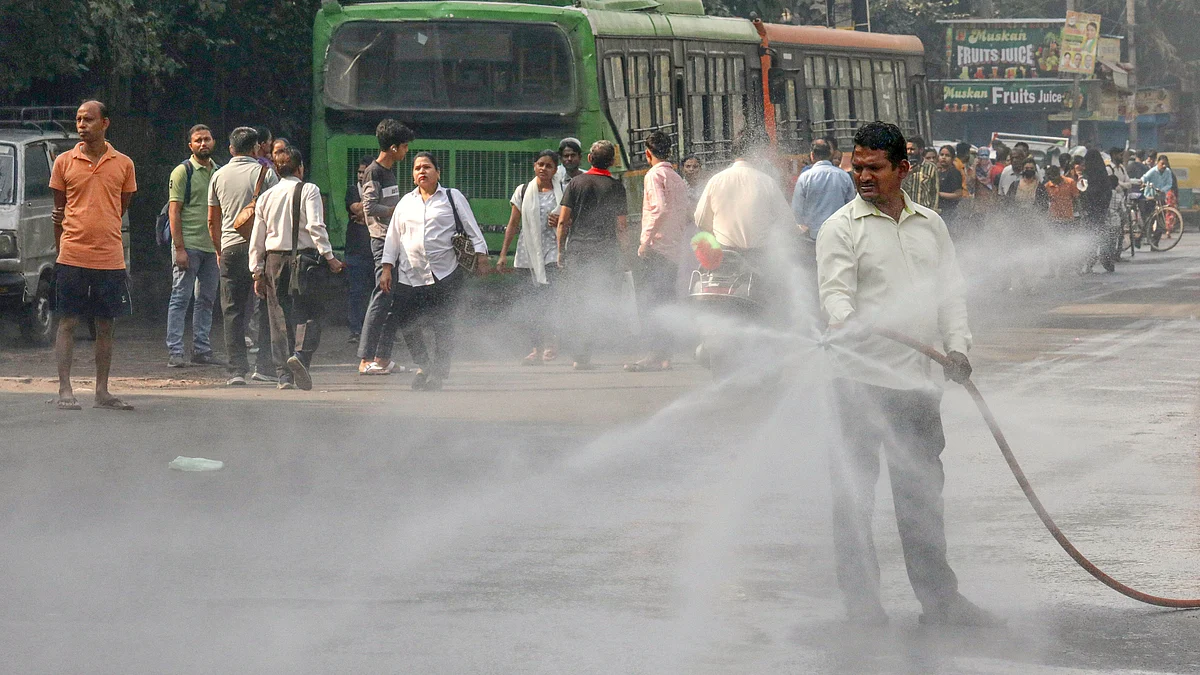Will this Diwali prove to be a deadly one for Delhi?
According to studies, the concentration of the micropollutants started rising from 7.30 in the evening - meaning the ban on bursting firecrackers was flouted widely

Since 2017, Delhi has banned firecrackers, yet data shows a sharp rise in PM2.5 and sulfur dioxide levels, along with increased noise pollution during Diwali. Most air quality monitoring stations report that pollution starts climbing in the evening and spikes dramatically around midnight.
Last year, on November 12, hourly PM2.5 levels at Anand Vihar measured 127 micrograms per cubic meter at 7 p.m., surging to 1,985 micrograms per cubic meter within five hours due to firecracker emissions.
Studies reveal that micropollutant concentrations begin rising from around 7:30 p.m., indicating widespread violation of the ban. Consequently, residents of Delhi NCR often resort to air purifiers and N95 masks to cope with the smog-filled environment. On average, PM2.5 concentrations climbed from 106 micrograms per cubic meter at 7:30 p.m. to 549 by 11:45 p.m.
The air quality index (AQI) in Delhi NCR regularly reaches hazardous levels. On Tuesday, local authorities recorded an AQI above 300, categorized as "very poor."
Data also shows a persistent rise in noise pollution due to firecracker use. On Diwali in 2023, noise levels in Delhi ranged from 53.7 dB(A) to 84.5 dB(A), whereas on a regular day, they fall between 46.4 and 69.5 dB(A).
On October 23, the Supreme Court criticised the central government for insufficient action to improve air quality, specifically reprimanding the BJP-led state governments of Punjab and Haryana for their limited efforts to control stubble burning—a major contributor to Delhi’s worsening pollution.
This issue has also ignited a political slugfest. Delhi's Aam Aadmi Party (AAP) government has held the BJP accountable for the capital's pollution crisis, with Chief Minister Atishi stating, “The BJP’s dirty politics is responsible for the rising air and water pollution.”
In response, BJP spokesperson Shahzad Poonawala remarked, “Today, Delhi has become a gas chamber due to the AAP's politics of blame-shifting. They promised a pollution-free Delhi, yet look at the state of the Yamuna and the air quality—it’s become a gas chamber.”
Ahead of Diwali, Delhi's air quality on 29 October, Tuesday, remained in the 'poor' category with an AQI of 268 against the 304 recorded on Monday, 28 October, even as 377 teams have been deployed to enforce the firecracker ban across the national capital.
Delhi environment minister Gopal Rai on Tuesday said 19,005 kg of firecrackers have been seized in raids across the city, and 79 cases have been registered against violators so far.
Delhi residents have complained to itchy, burning eyes resulting from the exposure to such a toxic and polluted environment. According to the National Institute of Health (NIH), "Delhi had significantly higher levels of chronic headache, eye irritation and skin irritation. The air pollution is associated with respiratory morbidity."
Follow us on: Facebook, Twitter, Google News, Instagram
Join our official telegram channel (@nationalherald) and stay updated with the latest headlines